Toyota RAV4 Vs Nissan Rogue Comparison

Going up against the RAV4 isn’t easy. But Nissan might have finally cracked it with the 2021 Rogue
Toyota RAV4 has held the title for the best-selling non-truck vehicle in the United States for years and for good reason. Yes, there is the bulletproof reliability that Toyota offers but the picture is much bigger than that. No other manufacturer offers the sheer number of trims that the RAV4 does. It’s like Willy Wonka’s chocolate factory of car lineups. It offers something for everyone. Looking for a compact crossover with off-road chops? RAV4 TRD, something milder? RAV4 Adventure (Trail if you’re Canadian). Apart from the regular gas engine, the RAV4 is available with series and plug-in hybrid powertrains as well. When you offer more trim choices than a gelato stall, challengers face an uphill battle right out the gate.
Nissan on the other hand, has really upped its game in the compact crossover market with its new 2021 Rogue. Both crossovers follow opposite philosophies where the RAV4 offers an excess of choice, the Rogue offers a solitary powertrain but copious amounts of convenience features and in-cabin tech. It left us impressed when we drove it last year and we think it’s a worthy competitor to the Toyota RAV4. While we couldn’t get our hands on a regular RAV4, the one we have is the next best thing, the TRD Pro. Technically, it qualifies as the top trim as it is the most expensive one in the lineup. So without further ado…
We have also left out the styling category as not only is it subjective but also is rarely a deciding factor in our comparisons so we leave the verdict on aesthetics up to you. Okay, I’m done with the disclaimers, I swear. Let’s get on with it.
Interior and Cabin Space
RAV4: Let’s start where you would spend most of your time, the cabin. The last RAV4 I drove was the hybrid last year and the TRD Pro we have here is quintessentially RAV4 barring the slew of TRD badges all over the cabin. Price-wise, the TRD Pro and Limited trims qualify as the top two models all things considered. Both are within $1,500 of each other and touch $40,000 all fees included but before options. But unfortunately, for $40k you don’t get much exclusivity or even premium materials inside the cabin.
There are soft-touch materials on the dash and on the door but the middle panel feels cheap because of the exposed plastic. The rubber grip on the door handle doesn’t scream quality either. If you’re paying nearly forty thousand for a car, you would expect it to have leather seats but the RAV4 doesn’t. Yes, Softex seats are easier to clean and make sense for the TRD trim but Toyota could offer them on the Limited trim but it doesn’t.
Speaking of, though the seats themselves feel snug and comfortable, the front of the cabin feels cramped despite offering 37.7 and 41.0 inches of head- and legroom. You sit on the front seats rather than in them and even on their lowest setting they seem too high. You always feel you’re sitting over everything else aggravating the lack of feeling of space.
Get a Quote on a New Toyota RAV4 or Nissan RogueThe rear though is much more comfortable. With 39.5 inches of available headroom and 37.8 inches of legroom, there is ample space for three average sized adults. You can squeeze in three slightly larger individuals but two can sit in comfort regardless of body proportions. Thanks to removable plastic panels, installing a child seat is pretty straightforward as well.
Rogue: If you compare the new Rogue’s cabin to the old generation you would think that they don’t even belong in the same class. From the moment you step in, you know that the cabin of the Nissan is a class apart. Before you, sits Nissan’s infinitely customizable Digital Dashboard which looks quite cool. Nissan offers the Platinum trim we have here with leather seats which gives the cabin an air of luxury. In fact, all touch surfaces were upholstered in leather or soft-touch materials. A bit of hard plastic on the door panels though cheapens the feel. Also, the leather on the shifter could have been of better quality.
The Rogue offers almost two extra inched of head- and legroom in the front. Plus, the panoramic sunroof and lower-placed seats make the cabin seem better than it is. The seats too are well contoured and very supportive. Taller passengers though will feel the need for a longer squab. Kyle, found the rear seats to be cramped compared to the old Rogue and also less spacious than the RAV4. A fact the spec sheet seems to resonate. Also, seating three adults in the back is a squeeze regardless of the size and build of the occupants.
Bottom Line: Between the two, the Nissan’s cabin might be a little less spacious but the massive panoramic sunroof certainly adds to the feeling of space in the rear row. Also, the cabin is certainly more luxurious and a lot more interesting and vibrant than the RAV4’s which feels rather dull before the Nissan. This category belongs to the Rogue.
Cargo and Towing
RAV4: As for luggage room, you get 37.5 cu-ft of it behind the second row while with the seats folded, you can accommodate 69.8 cu-ft of luggage. The RAV4 TRD Pro can also tow up to 3,500 lb with relative ease.
Rogue: With all rows up, the Rogue’s trunk can swallow 39.3 cu-ft of luggage with ease. Folding the second row down increases the luggage capacity to 74.1 cu-ft. Towing capacity for the Rogue stands at 1,350 lbs.
Bottom Line: Though the regular RAV4 can only tow 1,500 lb but the TRD here can manage 3,500 lb. But the Rogue offers more luggage space in the cabin. It sacrifices a bit of legroom in favor of a larger trunk and it works. But since neither has a clear advantage here, this ends in a draw.
Tech and Features
RAV4: In all honesty, the cabin of the Toyota feels a bit bland compared to the Rogue. The red accents and contrasting stitching add color to the cabin but it lacks the drama of the Rogue. The TRD being similarly specced as the Limited, the equipment level is almost identical. The instrument cluster is a mix of analog dials with a 4.2-inch MID screen in the middle which seems like an afterthought. The 8.0-inch Entune system is the bane of the cabin and does the use experience no favors. The buttons are too tiny to use on the move and the map resolution is mediocre at best, as is the overall resolution of the screen. Resolution of the reversing camera quality would be less-than-ideal in 2016. Android Auto and Apple CarPlay though run seamlessly and are the best way to cater to your infotainment needs.
But my biggest complaint with the RAV4 is that all the equipment that should be standard on the top trims is optional extra. Heated steering wheel, wireless phone charger, even heated and ventilated seats, are all part of the Limited Grade Technology package which costs $2,040 extra. If you want the Panoramic sunroof, add another $500 to the cost. Canada though, gets the heated steering wheel and heated seats as standard.
You do, however, get the fantastic sounding JBL sound system which does come in as standard on the TRD and the Limited trims. Another cool feature Toyota offers is the digital rearview mirror which really comes in handy when the car is at full capacity and you have a head or two obstructing your rear view.
Rogue: “The Rogue jumps to the front of the class in terms of sheer screen real estate, thanks to a fully digital dash, a 9.0-inch infotainment screen, and a head-up display” says Kyle. The advantage the Rogue holds over the RAV4 in terms of convenience features is irrefutable. Nissan’s 12.0-inch Digital Dashboard offers a crisp and high-definition display. It is also fully customizable with all controls residing right on the steering wheel.
But the HUD has to be the biggest advantage the Rogue has over the RAV4. Measuring 10.0 inches across, the HUD system displays a slew of information including navigation and traffic signs. The third screen is a 9.0-inch touchscreen infotainment that offers Android Auto and wireless Apple CarPlay along with Wi-Fi capability. The redundant buttons below the screen are easier to use on the move compared to the ones on the RAV4.
The Platinum trim we have here gets heated seats at the front and the rear. Ventilated seats however, are not available. A Bose sound system adds to the overall feel of the cabin and I found it to be better (but only just) than the JBL system in the Toyota.
Bottom Line: The Rogue offers more equipment compared to the RAV4, the HUD, a larger infotainment screen and wireless CarPlay make it the best in class offering so far. Hence. the Rogue is the clear winner here.
Powertrain, Driving Feel, and Fuel Economy
RAV4: Our resident editor Kyle prefers the RAV4 Hybrid’s powertrain for its initial boost which is missing from the gas-powered ones and I agree with him. “This being the TRD, it’s supposed to feel a little more rough-and-tumble than a regular gas RAV” he remarks but as far as the powertrain goes, it feels pretty much the same. In fact, despite the 203 hp from the 2.5-liter four-pot, it feels rather slow on the uptake. It’s not until you go past 2,500 rpm do you feel the 184 lb-ft of torque kick in.
“I like it more than the Rogue, largely thanks to the more natural responses from the eight-speed auto. Initial throttle response is duller than the Nissan, but that one feels artificially eager on tip-in.” says Kyle and I both agree and disagree with him. The eight-speed on the Toyota feels more organic than the CVT on the Rogue but also a bit slow when you require immediate responses. However, it is helpful on the highway when making overtakes.
Like most Toyota cars, the RAV4 is sprung soft. But the TRD trim we have here comes with slightly raised suspension and hence rides softer than its more regular siblings. Around town, the extra cushioning helps in navigating the bumps and undulations. For a rather focused-ish vehicle, the ride is smooth and absorbant. We would have preferred the Limited trim for a more apt comparison but as Kyle points out “we work with what we can get.”
SEE ALSO: 2021 Toyota RAV4 Prime First Drive Review: Plug-In PowerWhile the softer ride is a boon in the city it also translates to more lean in the corners even compared to the regular RAV4. Out on the highway too it takes a while to settle after you’ve changed lanes and there is considerable wind and tyre noise that seeps into the cabin, especially at highway speeds. Despite its off-road inclination, the RAV4 claims to return a respectable 25 mpg in the city and 32 mpg out on the highway. The combined figure stands at 28 mpg.
Rogue: Nissan has stuck to its guns and offers the Rogue with the solitary powertrain that powers practically every other Nissan product. The 2.5 -liter four-pot manages 181 hp and the same amount of torque. It pairs with a CVT that primarily drives the front wheels with an on-demand system taking care of rear traction in case of a slip.
Off the line, it feels quicker and more eager than the RAV4. Plus, it makes its peak torque at 3,600 rpm against 5,000 rpm (Toyota), so that helps too. But the initial pull soon dissipates and the power deficit is especially prominent on the highway where the Rogue struggles to gain speed quickly. Burying the throttle results in more noise than progress which is not the case with the RAV4.
But it also feels a lot more stable than the Toyota on the Highway. It’s a result of Nissan increasing the torsional rigidity and stiffening up the suspension. The new chassis and suspension setup works wonders on the highway and results in higher mid-corner stability. The Rogue can take sweeping turns without feeling like a sail in the wind. But it comes at the cost of low-speed city ride. At lower speeds, it feels stiffer than a compact city crossover should. Undulations make themselves audible while you will feel the bigger bumps and potholes, especially at lower speeds. It doesn’t match up to the low-speed demeanor of the Toyota.
In terms of fuel efficiency, it is identical to the RAV4 as it claims to return 25 mpg in the city, 32 mpg on the highway for a combined figure of 28 mpg.
Bottom Line: Considering these crossovers will spend most of their lives in the city with only occasional highway stints, the RAV4 is the winner here thanks to its supple city ride and respectable highway manners. Plus, the 22 hp advantage over the Rogue also helps.
Safety
RAV4: Toyota offers the RAV4 with its Safety Sense 2.0 as standard. It includes a pre-collision system, with pedestrian detection, radar guided cruise control and lane departure assist among others. The TRD we have here comes with all bells and whistles including blind-spot monitoring with rear cross-traffic alert and cruise control with stop and go. A front and rear parking assist with emergency braking is also available but as an optional extra only.
Rogue: Nissan offers a lot of active driving assists as standard on the Rogue. Apart from the AEB with pedestrian detection, lane departure warning, and forward collision warning, the Rogue also comes with blind-spot detection with rear-cross traffic alert as standard. It also offers rear automatic braking as standard across the range as well.
Features like traffic sign recognition, Pro-Pilot Assist, and Pro-Pilot with Navi Link are available with the Platinum trim only.
Bottom Line: Nissan takes this category too as it offers way more safety tech as standard than the RAV4.
Pricing
RAV4: Prices for the RAV4 start from $27,325 ($30,450 CAD) including destination for the base LE trim with FWD. Upgrading to AWD costs $1,400 (2,100 CAD) extra and upgrading to the hybrid powertrain is a further addition of $1,150 ($2,260 CAD for LE only) to the cost. Trims LE through XLE premium make do with the 7.0-inch Entune infotainment system. The 8.0-inch unit is available Adventure trim onwards which is called the Trail in Canada ($41,250 CAD) and comes with AWD only and starts from $34,530. Hybrid customers looking for a sportier option can opt for the XSE which is only available as a hybrid and starts from $35,925 ($41,200 CAD).
SEE ALSO: 2020 Toyota RAV4 TRD Off-Road ReviewThe Limited trim is the top regular trim and starts from $35,955 for the FWD version. In Canada, it is available with AWD only and starts from $43,550 CAD while the upgrade to hybrid is $1,660 extra. Finally, the TRD Pro is only available with AWD and starts from $37,155 ($44,770 CAD). But the one we have here comes with the “Advanced Technology Package and Premium Audio with Dynamic Navigation and JBL”, yes, that is the name, and costs $3,570 over the MSRP and adds features like wireless charging, bird’s eye camera, front and rear parking assist with auto braking among others.
There is no panoramic sunroof available here but is available on the Limited and XSE hybrid trims as part of a technology and JBL premium audio bundle and costs $2,540 and $3,135 respectively.
Rogue: Available in four core trims, the price for the base S trim with FWD starts from $26,900 ($30,628 CAD) including destination. All trims are available with FWD and AWD. Upgrading to AWD adds $1,400 ($2,300 CAD) to the price regardless of the trim. All trims except the Platinum get the smaller 8.0-inch infotainment screen which is on par with RAV4’s bigger Entune system. In addition, both SL and Planitum trims come with the panoramic sunroof.
The SV FWD starts from $28,590 ($34,128 CAD) while the SL trim is priced from $33,250. As for the top of the line Platinum trim, prices start from $36,680 for the FWD model. The one we have here is the AWD version and is priced at $38,080. In Canada, the Platinum is available with AWD only and starts from $42,628 CAD. Nissan also offers a couple of packages but only on the SL and SV trims. The SL Premium Package adds Bose 10-speaker audio system along with the bigger 9.0-inch infotainment with wireless CarPlay for $1,320 extra. On the other hand, the SV Premium package adds the panoramic sunroof, roof rails, powered tailgate and heated front seats to the SV trim for $2,660 extra.
Bottom Line: The Nissan offers more standard and optional equipment for the money and still manages to undercut the Toyota and hence is the winner of this category as well.
Verdict: Toyota RAV4 vs Nissan Rogue
Toyota has reigned supreme in the compact crossover market with the RAV4 for years and it will probably continue to do so, its bulletproof reliability being one of the prime factors. RAV4’s something-for-everyone approach proves beneficial to the crossover. The Nissan Rogue on the other hand has a rather conservative trim lineup compared to its rival.
But its best-in-class features like HUD and a fully digital instrument cluster coupled with a luxurious cabin are its biggest strengths. Yes, the RAV4 offers more power and more powertrain options but its in-cabin experience just doesn’t match up to the Rogue’s. Yes, the powertrain is a compromise but the opulence and sheer list of convenience features you get in return is worth making said compromise. Unless you must have a hybrid, the Rogue is the clear choice between the two.
Become an AutoGuide insider. Get the latest from the automotive world first by subscribing to our newsletter here.

More by Kshitij Sharma






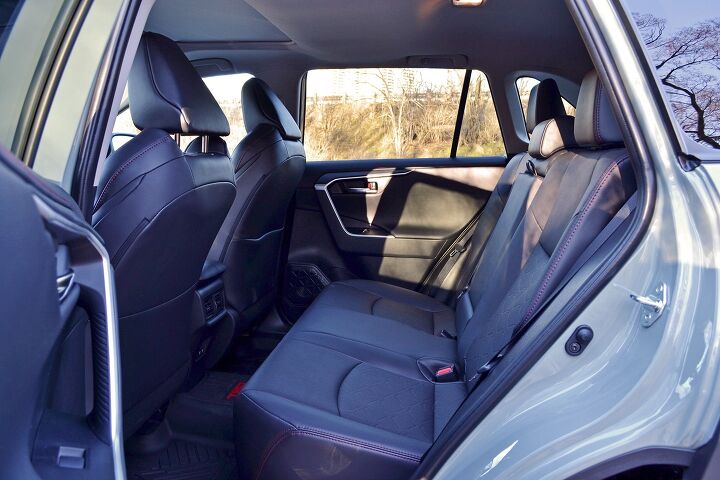


































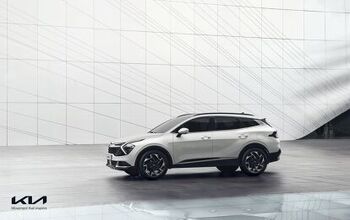

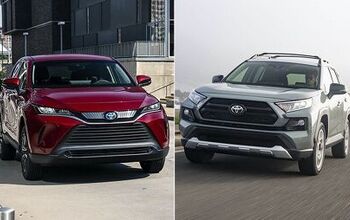


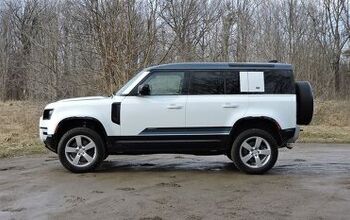



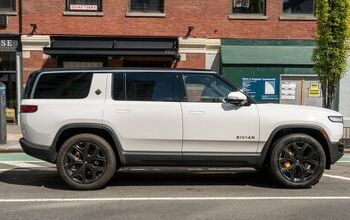

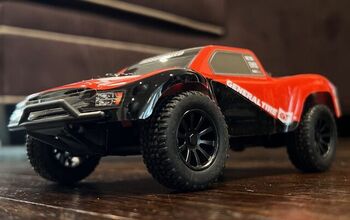
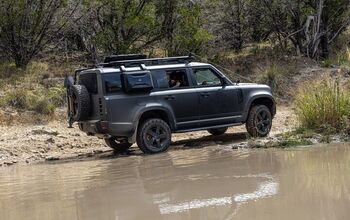
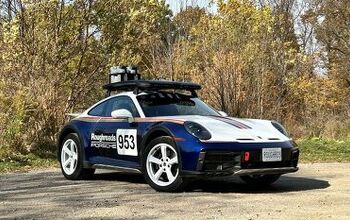
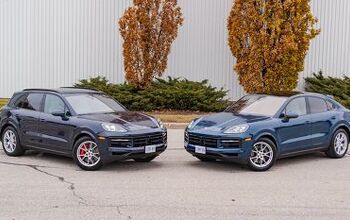
Comments
Join the conversation
You chose the Rogue over the Rav4? How much did Nissan pay you to do so. What a JOKE
I have a 2021 fully loaded Rogue Sport and I love it. The only problem I have is that it is sluggish. It is better in the sport mode. However, every time I start the car the button must be pushed to activate the sport mode. I wish I could have the sport mode as the default.